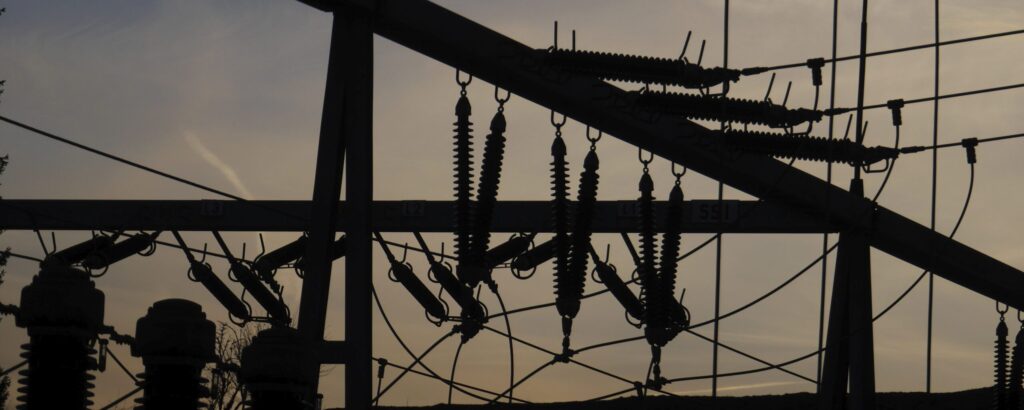By Shalini Bhat, PE, Program Director

The U.S. electric grid, which consists of three main interconnections and delivers power to millions, is reaching a critical juncture. Much of the infrastructure was built 50-75 years ago and is struggling to keep up with modern energy demands, weather events, and the transition to renewable energy. As outages become more frequent and maintenance costs rise, the need for a comprehensive modernization strategy has never been more urgent. This issue has been a top priority for utilities for the last decade.
Many components of the U.S. electric grid date back 40 to 70 years, well beyond their intended lifespan. While the grid has been expanded and updated over time, the core infrastructure remains outdated. This includes:
- Transmission Lines: Many were designed for a smaller, less energy-intensive population and struggle to handle increased loads.
- Power Transformers: Nearly 70% are over 25 years old, making them vulnerable to failure.
- Substations: Aging equipment increases the risk of widespread failures, where one breakdown triggers cascading outages.
With electricity demand rising due to the growth of electric vehicles (EVs), data centers, and smart home technologies, the strain on this aging system is growing.
Aging infrastructure contributes to:
- Frequent Power Outages: The U.S. experiences more outages than most developed nations. Weather-related events, such as hurricanes, wildfires, and winter storms, often cause widespread blackouts due to the vulnerability of outdated systems.
- Higher Costs: Maintenance and emergency repairs for aging equipment are costly. The American Society of Civil Engineers (ASCE) gave the U.S. energy infrastructure a C-minus grade in its most recent report, citing the need for significant investment.
- Inefficiency and Energy Loss: Older transmission systems suffer from inefficiencies, leading to energy loss during transmission and distribution. This increases overall energy costs to customers.
- Cybersecurity Risks: Many older grid components were not designed with modern cybersecurity threats in mind, making them vulnerable to cyberattacks from hostile actors.
Challenges in Modernizing the Grid
- High Costs: Upgrading the grid requires substantial investment. The Department of Energy estimates that modernizing the grid will cost hundreds of billions of dollars over the next two decades.
- Regulatory Barriers: The U.S. power grid is fragmented, with a mix of public and private utilities regulated at the state and federal levels. This creates challenges in coordinating large-scale improvements.
- Integration of Renewable Energy: The transition to solar, wind, and other renewables requires a grid capable of handling variable energy sources. Many older systems were built for centralized fossil fuel power plants rather than decentralized renewable energy sources.
- Environmental and Land Use Concerns: Expanding and upgrading transmission infrastructure often requires new power lines, which face resistance from environmental groups and local communities.
Solutions and the Path Forward
- Smart Grid Technology: Investing in smart grid technology can improve efficiency, reduce outages, and integrate renewables. Smart meters, automated sensors, and AI-driven monitoring systems allow for real-time adjustments and predictive maintenance.
- Federal and State Investment: The Bipartisan Infrastructure Law (2021) allocated billions toward grid modernization, but additional long-term funding is needed. Public-private partnerships and targeted incentives can help utilities upgrade infrastructure without overburdening ratepayers.
- Strengthening Transmission Networks: Expanding high-voltage transmission lines can improve reliability and enable the transfer of renewable energy across regions. The Federal Energy Regulatory Commission (FERC) has proposed policies to streamline the approval process for new projects.
- Distributed Energy Resources (DERs): Encouraging localized energy production, such as rooftop solar and battery storage, can reduce strain on the grid and improve resilience. Microgrids—small, independent grids that can operate autonomously—are another promising solution, particularly for critical facilities like hospitals and military bases.
- Cybersecurity Enhancements: Upgrading cybersecurity protocols and investing in AI-driven threat detection can help protect the grid from cyberattacks. Collaboration between government agencies, utilities, and cybersecurity firms is essential.
The aging U.S. electric infrastructure poses significant risks, but with strategic investments and policy reforms, the grid can be modernized to meet 21st-century demands. A combination of smart technology, increased funding, renewable energy integration, and cybersecurity improvements will be key to ensuring a reliable, efficient, and resilient power system for the future.
Training and Education at UW–Madison
At the University of Wisconsin–Madison’s Interdisciplinary Professional Programs, we’re committed to preparing professionals to address the complex challenges of electric infrastructure. Our courses support both the foundational knowledge necessary to maintain a reliable grid and the skills required to navigate emerging technologies.
Whether you’re new to the field or a seasoned engineer looking to upskill, we offer a variety of noncredit short courses designed to meet your needs.